Walkabout: A Shirley Chisholm Architectural Walking Tour, Part 1
Read Part 2 and Part 3 of this story. When I was growing up, I knew who Shirley Chisholm was. I come from that generation of African American children whose parents made sure we knew who all of the “firsts” were. Kids growing up today take the many achievements of African Americans for granted, and…
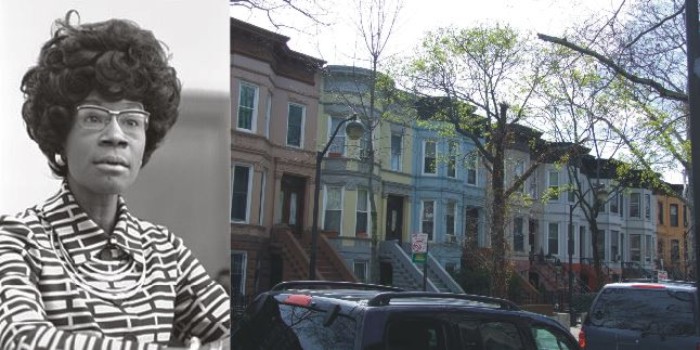

Read Part 2 and Part 3 of this story.
When I was growing up, I knew who Shirley Chisholm was. I come from that generation of African American children whose parents made sure we knew who all of the “firsts” were. Kids growing up today take the many achievements of African Americans for granted, and that’s a great thing, because we should be able to achieve whatever we want without notice or fuss.
We shouldn’t have to be able to make a list of the number of black nuclear scientists, cancer researchers, neurosurgeons, fashion designers, Oscar winners, hockey players or even Republicans; we should be able to be well represented in all facets of American life.
But when I was in my formative years, during the 1960s, we were just getting to the point where there were a lot of “firsts.”
The Civil Rights Movement, which happened right before my eyes on our black-and-white television, was both sobering and inspiring. We grew up checking the pages of Ebony magazine, the black version of Life, which always had articles about those black folks who had arrived — pioneers in all walks of life, “firsts” or sometimes only “seconds” or “thirds” in every field we had managed to conquer.
Shirley Chisholm was one of those proud pioneers, and as a female, she was of special interest to my mother, and thus, to me.
But it wasn’t until I actually moved to Brooklyn that I realized what that all meant. It’s easy to be somewhere else reading about great people of any nationality, time or location and be inspired, but when you live where they lived, walk past the buildings they were educated, worked or lived in, and see the world they saw, you get a special affinity for what it was like to shape that landscape and those people into history.
While I lived in Brooklyn, I lived in Shirley Chisholm’s stomping ground, and so in honor of her achievements, I’d like to propose a Shirley Chisholm Walking Tour.
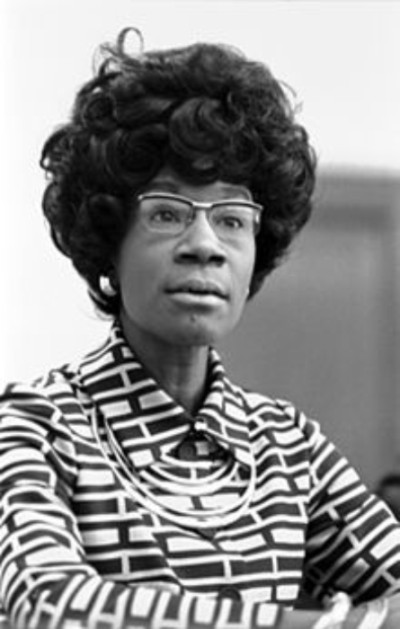
In 1968, Shirley Chisholm was the first African American woman elected to Congress in the history of the United States. She was also the first major-party black candidate for President of the United States, and the first woman to run for the Democratic nomination for president, in 1972. That’s a nice set of “firsts.”
She was born in Brooklyn on November 20, 1924. Her mother, Ruby Seale, was from Christ Church, Barbados, and her father, Charles Christopher St. Hill, was from British Guiana, now Guyana. Both had come to America at a time when many Caribbean people were emigrating to the United States, Great Britain and Canada from English speaking Caribbean colonies.
Coincidentally, my own father was also born in British Guiana and immigrated with his parents to the United States in 1926, when he was six months old. He was also born in November, and spent his earliest years in Brooklyn. They would have been contemporaries, had they known each other. Perhaps that is also part of the reason why I find her story so interesting and compelling.
Shirley Anita St. Hill was the oldest of four daughters, born to a burlap factory worker and a seamstress. When she was 3, her parents sent her and her two sisters to live with her grandmother in Barbados. When she was old enough, she attended the Vauxhall Primary School, the local school. British educational standards, even in the colonies, were strict and the education was exemplary. Shirley and her sisters came back to Brooklyn seven years later, in 1934, miles ahead of their Brooklyn school mates.
That British education gave her a superior head start, as well as a bit of British pronunciation that never left her, and she was soon a top student. She easily matriculated into the prestigious Girls High School on Nostrand Avenue in Bedford Stuyvesant, and it is here that our Shirley Chisholm walking tour begins.
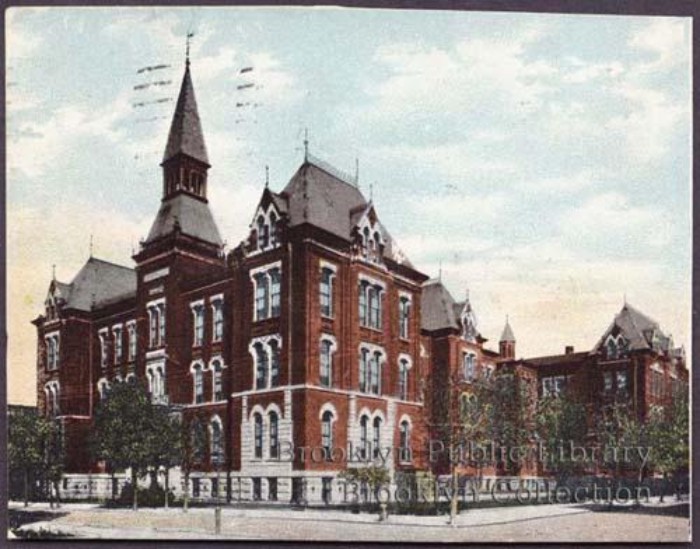
1. Girls High School: Girls High School, at 457 Nostrand Avenue, between Macon and Halsey Streets, was built in 1885 as Brooklyn’s first high school.
It was designed in the High Victorian Gothic style by James Naughton, the Superintendent of Buildings for the Brooklyn School System, and the architect of all of the schools built in Brooklyn during his tenure between 1878 and 1896, when he died. Girls High School was built as an experiment in public education, and was the first high school in New York City.
Up until that point, a free public-school education ended after grammar school. By the time the building was completed, there were so many eligible students that the Board of Education decided to make this building the girls’ school, and set to work designing a separate high school for boys, which opened several years later.
Both schools are in Bedford, highlighting that neighborhood’s prestige and importance. By 1885, Bedford was one of the fastest growing and most desirable neighborhoods in Brooklyn, and having the school here was a major coup.
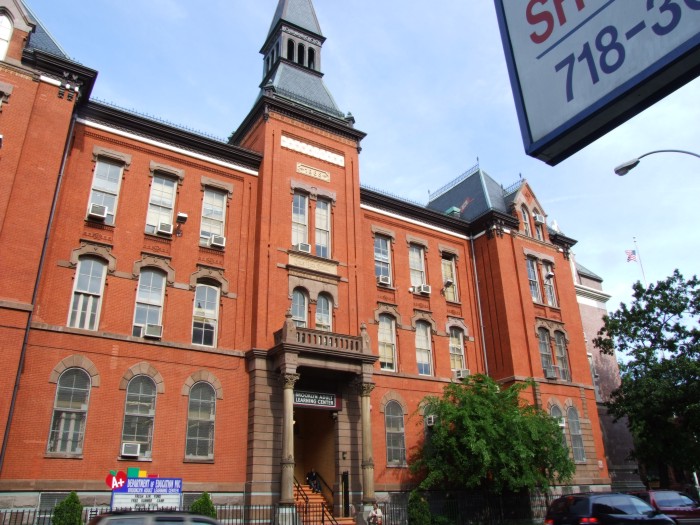
The school only accepted the best female students. Even 50 years later, by the time Shirley Chisholm was eligible, in 1939, the school was still quite elite. The schools had been integrated for many years at that point, but Shirley would still have been a minority student in a high school in a neighborhood that was rapidly becoming more and more African American.
Shirley excelled at Girls. She was vice president of the Junior Arista Honor Society, a rarity, as most black girls were not steered into honors programs. She also graduated with a medal of excellence in French.
She won scholarships to both Vassar and Oberlin Colleges, but could not go, because her parents couldn’t afford the room and board. She opted to go to Brooklyn College instead.
Naturally, she excelled there, as well. She had decided to become a teacher, but majored in sociology and minored in Spanish, and was fluent in the language. She was a champion on her debating team, and a member of the Delta Sigma Theta Sorority.
When a social club refused to accept blacks, she founded an alternative club, her first foray into getting what she wanted in spite of what other people thought. She graduated cum laude from Brooklyn College in 1946.
Unfortunately, Brooklyn College is a little far to walk for this tour. But by 1945, her equally hardworking parents had saved up enough money to buy a house, the goal for every Caribbean immigrant of their day. It was a row house on Prospect Place, between Kingston and Albany avenues, in what was still considered Bedford Stuyvesant at that time. Today, it’s part of Crown Heights North.
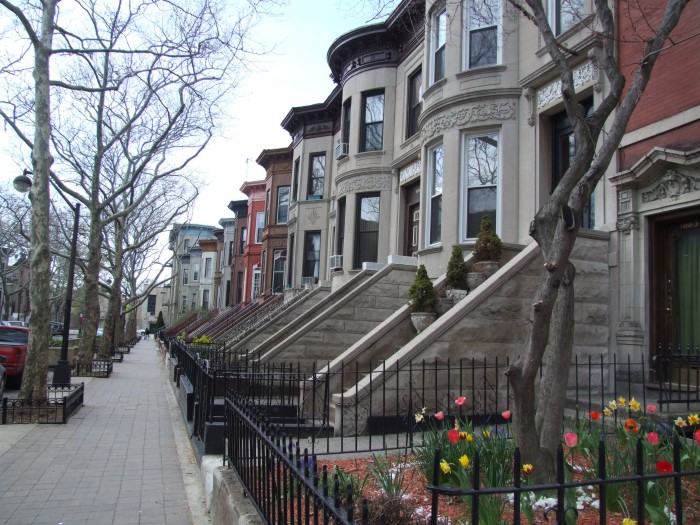
2. Prospect Place “Superblock”: This block is one of two “Superblocks,” so designated in the 1960s as part of a pilot program by the Bedford Stuyvesant Restoration Corporation. But back in 1945, it was just another row-house block.
The Albany Avenue side of the block faced the large Catholic orphanage complex, the St. John’s Home for Boys, which had been there since the late 1800s. The Kingston Avenue end of the block faces Brower Park, creating a lovely rather isolated block filled with a mixture of two-story limestone row houses, a couple of small flats buildings, a set of double duplex houses and some earlier wood framed houses and brick row houses.
The limestone row houses were developed in 1901 and designed by Axel Hedman, the master of the Renaissance Revival row house, and the architect of hundreds of these houses in Crown Heights North and South, Stuyvesant Heights, Prospect Heights, Park Slope and Flatbush. The houses had a duplex apartment on the bottom two floors and a separate apartment on the top floor.
During the time the St. Hill family bought their home, many of these houses were further subdivided into rooming houses for extra income. Families often sacrificed personal comfort and space in order to own their homes. Redlining in this neighborhood made home ownership even more difficult, but thousands made it work by working several jobs, and renting out as much as they could.
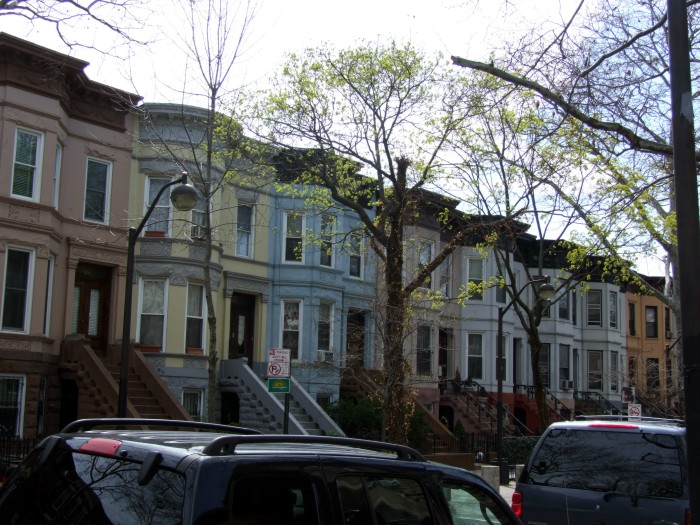
Shirley St. Hill lived on this block for the year she was still attending Brooklyn College. One of her sisters moved from home and lived across the street, renting a room in 1081 Prospect Place. The block has always had a lot of pride, and was home to African American strivers of many kinds.
One of the famous Tuskegee Airmen settled with his family on this block after World War II. They had a long standing block association, and the block was like many Bed Stuy blocks — clean and safe.
This quiet block was in the enormous neighborhood known as Bedford Stuyvesant. By the beginning of the 1960s, the entire neighborhood, the size of a small city, had been written off as the “Worst Ghetto in America,” by the press, social scientists and city leaders.
Many of the blocks were filled with abandoned and burned out buildings, urban renewal had mowed down block after block of low density row houses to build high rise housing projects, and the factory jobs which had fueled the local economy had all closed up and disappeared.
The city had cut back on sanitation, repairs and services, and crime and misery had rendered some parts of Bed Stuy about as miserable as an American urban ghetto could get.
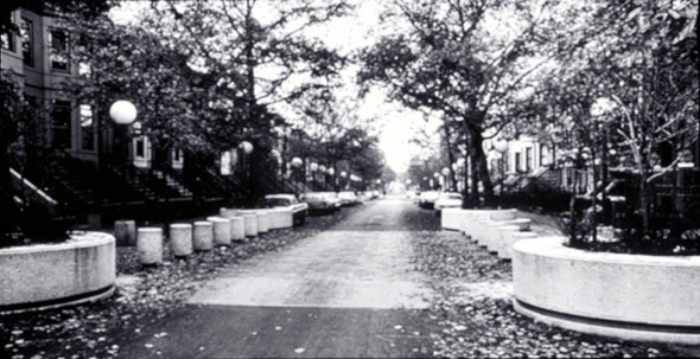
Of course, not every block was miserable. Local leaders knew that much of Bedford Stuyvesant was still filled with blocks like Prospect Place. When the Bedford Stuyvesant Restoration Corporation was established by local community leaders and Senators Robert F. Kennedy and Jacob Javits, in 1966, one of their goals was to make sure blocks like Prospect Place were replicated throughout the area.
Kennedy, Javits and local leaders toured the vastness of Bedford Stuyvesant and chose this block and the adjoining St. Marks Avenue, right behind it, as the two blocks that would be a pilot program for future urban planning. They were called “Superblocks.”
Kennedy got his family’s favorite architect, I.M. Pei, to come on board, and they proceeded to change both blocks. Prospect was chosen because it was intact, beautiful, somewhat isolated and, most importantly, filled with strong and proud community-minded homeowners.
Pei didn’t do much here. They made access to the block limited, and expanded the sidewalks, added concrete seating, new lighting and landscaping.
The result was a park-like block that encouraged neighbors outside to congregate with each other. The changes to St. Marks Avenue were much more involved. For more on this project, please see my Walkabouts on the topic, Saving Bedford Stuyvesant Part 1, Part 2, Part 3 and Part 4.
The Superblock project remained only a pilot, and no more Superblocks exist in Bedford Stuyvesant. But it and the work of the Bedford Stuyvesant Restoration Corporation changed life in Central Brooklyn for many people. The block was further chosen by filmmaker Sidney Lumet as the location of Dorothy’s home in the movie The Wiz. The movie starred Diana Ross, Michael Jackson and Richard Pryor. Scenes were filmed here in 1978.
Shirley St. Hill had long become Shirley Chisholm by this point, and by 1968 had been elected to Congress. She no longer lived on Prospect Place, although the family stayed much longer. She was still in the neighborhood, though. In Part 2, we’ll continue the walking tour, highlighting more places that were pivotal to this great lady’s life story.
Related Stories
Walkabout: A Shirley Chisholm Architectural Walking Tour, Part Two
Walkabout: A Shirley Chisholm Architectural Walking Tour, Conclusion
Shirley Chisholm, Bed Stuy’s Restoration, and More: 5 Longreads for a Long Weekend
Email tips@brownstoner.com with further comments, questions or tips. Follow Brownstoner on Twitter and Instagram, and like us on Facebook.
[sc:daily-email-signup ]
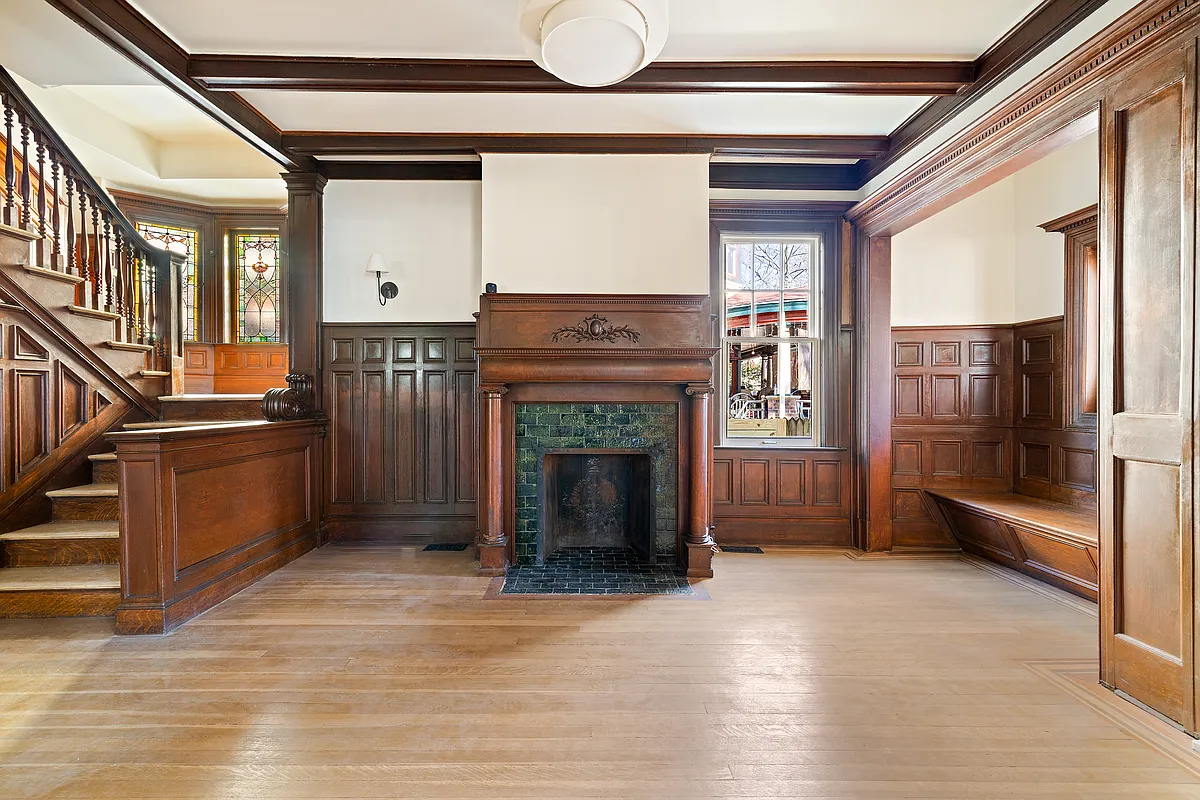
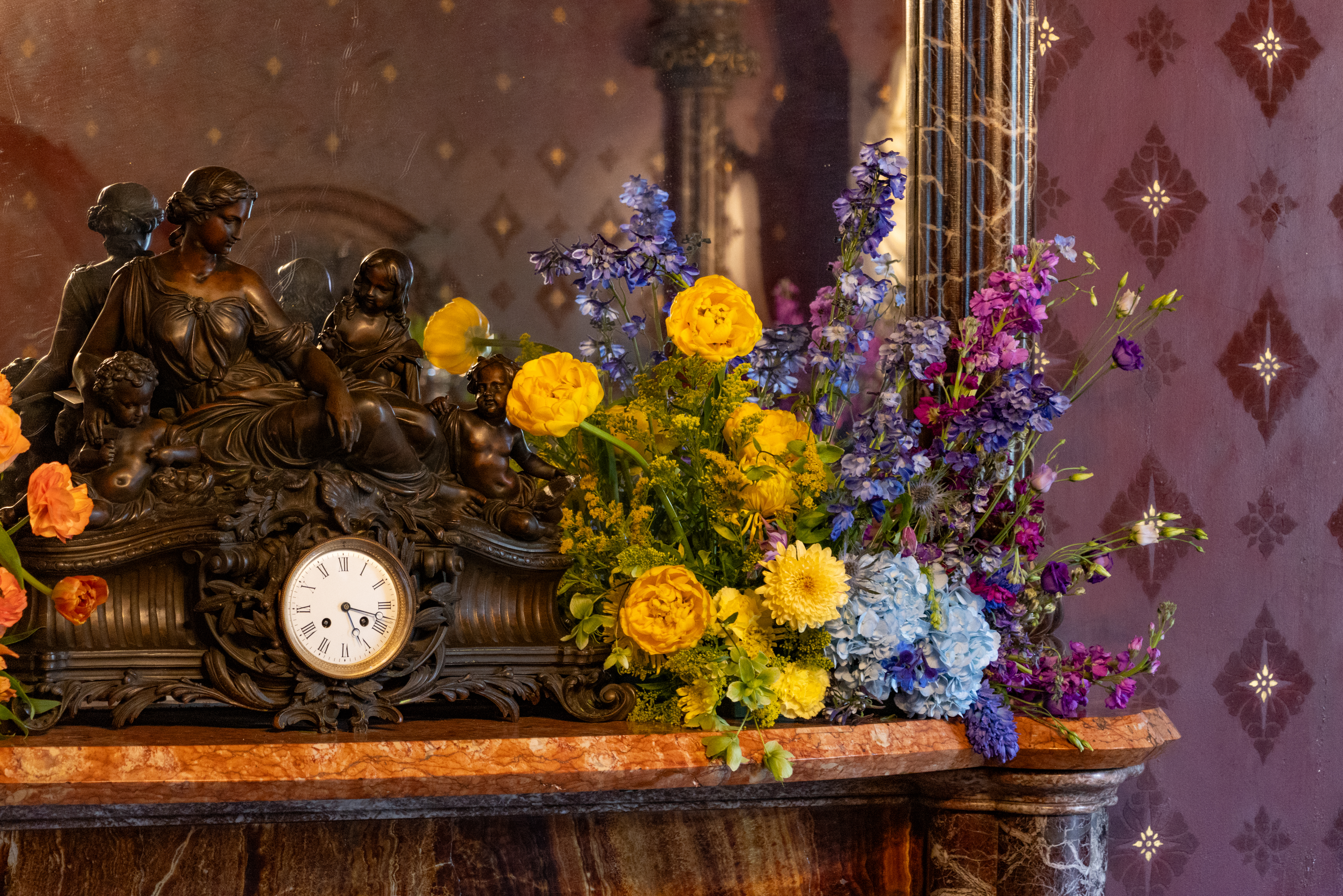
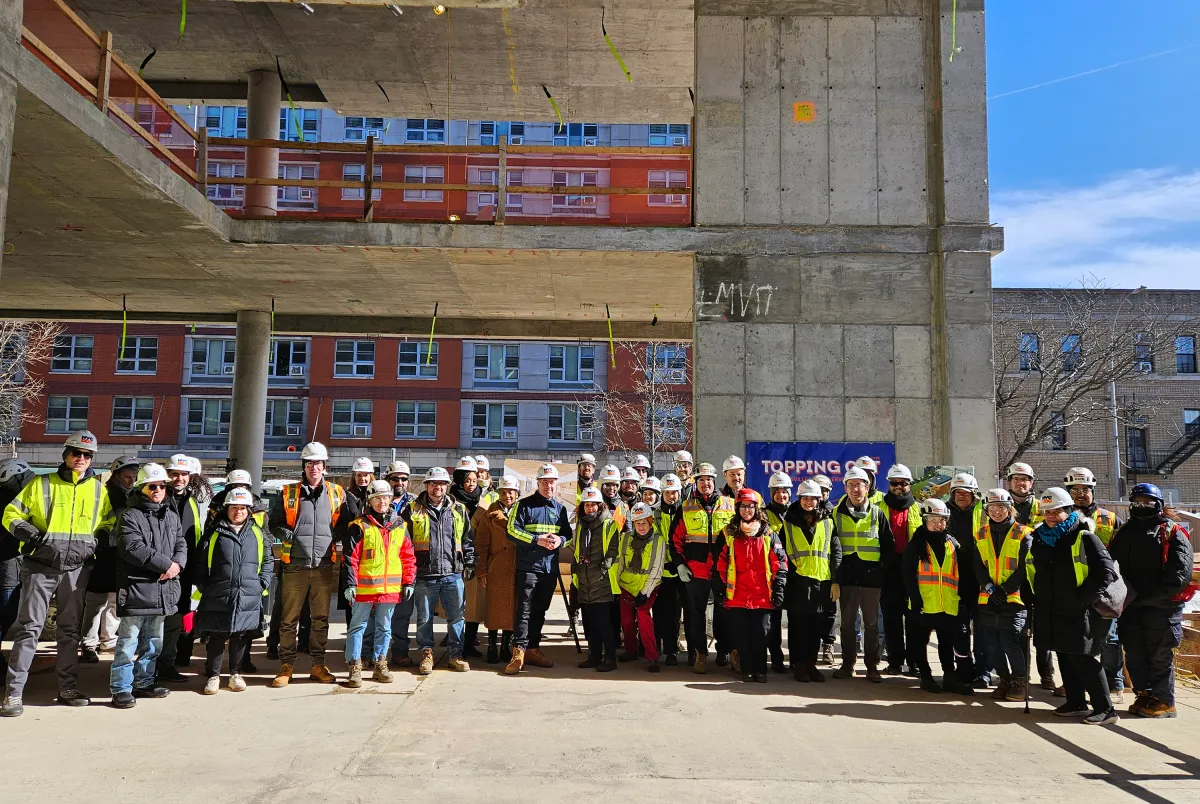





Well here we go!
I met Shirley Chisholm when I was a child. She came to speak at P.S. 56. I shook her hand and and she asked me my name, I couldn’t wait to tell my Parents.
This was a exciting time (1972) because she was running for President. We knew damn well Shirley Chisholm was not gonna win but, the symbolism was great for African Americans, Women Rights and something different for the Status Quo Bullshit.
It’s great naming the State Office Building (55 Hanson Pl.) after her, Shirley Chisholm is a Magnificent Women and a great Pioneer of the Civil Rights Movement.
.
The What
Someday this war is gonna end…